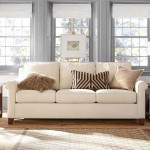Selecting the Perfect Sofa Color in Revit: A Comprehensive Guide
When designing a living room in Revit, choosing the right sofa color is crucial for creating the desired ambiance and aesthetic. With a myriad of options available, it can be overwhelming to determine the ideal hue that complements your space and style. This comprehensive guide will provide you with essential insights and considerations to help you select the perfect sofa color in Revit.
1. Determine Your Room's Style
The first step is to identify the overall style of your living room. Whether it's traditional, contemporary, Scandinavian, or eclectic, the sofa color should harmonize with the existing elements and create a cohesive design. For example, a classic Chesterfield sofa in a deep brown leather complements a traditional living room with dark wood furniture and rich fabrics.
2. Consider the Color Scheme
The sofa color should complement the existing color scheme of your living room. If your walls are painted in a neutral color like white, beige, or gray, you have a wider range of sofa color options. However, if your walls have a bold color, it's best to choose a sofa color that balances the intensity and creates a harmonious contrast.
3. Think About the Lighting
The amount of natural and artificial light in your living room can impact the perceived color of the sofa. In rooms with ample natural light, you can opt for darker sofa colors as they won't appear too overwhelming. Conversely, in rooms with limited natural light, lighter sofa colors will help brighten the space and create a more inviting ambiance.
4. Choose a Durable Color
Sofas are subjected to daily wear and tear, so it's crucial to select a color that will withstand fading, staining, and discoloration. Darker colors like black, navy, and charcoal gray tend to conceal dirt and stains better than lighter colors. If you have pets or children, consider choosing a sofa color that is resistant to scratches and pet hair.
5. Consider the Size of the Room
The size of your living room should also influence your sofa color choice. Lighter colors like white, cream, and pale gray can make a small room appear larger and more spacious. Conversely, darker colors like black, deep green, and burgundy can add a sense of intimacy to a large room. It's important to strike a balance between the sofa color and the room size for a harmonious design.
6. Use Revit Color Samples
Revit provides a convenient way to preview different sofa colors in your virtual living room. By importing a sofa model and applying various color materials, you can visualize how each color looks in the context of your design. This allows you to make informed decisions without having to purchase and install actual sofa samples.
7. Experiment with Different Shades
Once you have selected a few potential sofa colors, experiment with different shades and tones of each color. For example, if you want a blue sofa, consider varying shades from navy to light blue. Subtle differences in hue can create a significant impact on the overall look and feel of your living room. Use Revit's color picker tool to explore a wide range of options.
Conclusion
Selecting the perfect sofa color in Revit requires careful consideration of the room's style, color scheme, lighting conditions, sofa durability, room size, and available color samples. By following these essential aspects, you can make an informed decision that will enhance the aesthetic appeal of your living room and create a harmonious and inviting space.

Revit Tutorials Color Scheme

Revit Furniture Family Changing Color And Materials

Solved Area Colors Are Covering My Furniture Autodesk Community Revit S

Revit Selecting And Changing Colors Of Elements

Revit Tutorial Modern Sofa Furniture Family

Revit Tutorial Sofa Design

Help Color Schemes Autodesk
Help Add A Color Scheme To View Autodesk

Parametric Modular Sofa Families For Revit Rd Studio

Free Revit Families Klippan Sofa Dynamo








